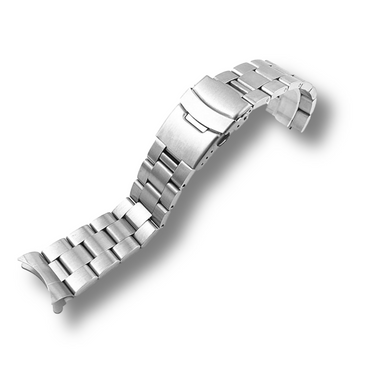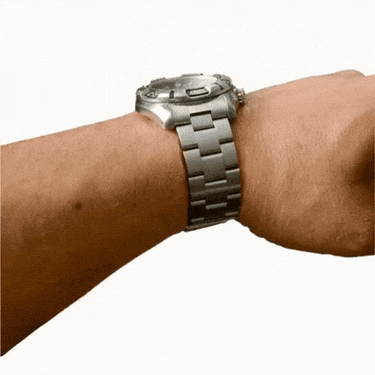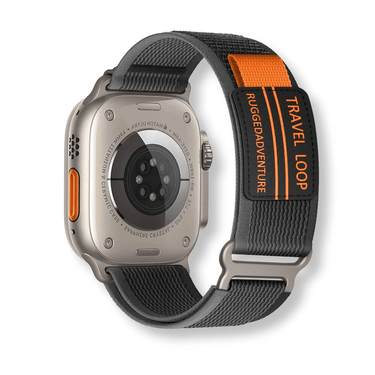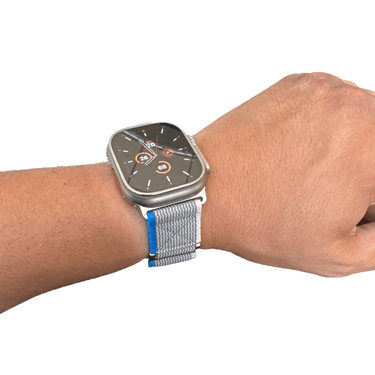Introduction
Military and tactical personnel usually require a watch band that is durable, comfortable, water-resistant, and easy to read. NATO watch bands are gaining popularity in the military and tactical community due to their rugged durability, comfortability and versatile design.
The NATO strap has become an essential part of the military because of its versatility regarding functionality. In this article, we will guide you through everything you need to know about choosing the best NATO watch bands for military and tactical use.
Explanation of NATO watch bands
A NATO strap is a type of wristwatch band developed by the British Ministry of Defence in 1973. The strap was originally made for military use but has since become popular as a fashion accessory due to its distinctive style.
It consists of nylon or ballistic nylon webbing that extends from one spring bar to the other attached with metal loops at each end. The defining feature of a NATO strap is its design; it consists of one solid piece that can be looped around the wrist and through both bars on either side of a standard analog watch face.
Unlike other straps that are fixed with pins, a NATO strap loops underneath the timepiece itself which makes it less likely to come undone or break if one spring bar fails. It's also adjustable so that it can fit any wrist size.
Importance of choosing the right watch band for military and tactical use
When selecting a watchband for military or tactical purposes, there are several key factors you need to keep in mind: Durability: Military personnel operate under tough conditions where equipment takes constant abuse.
A high-quality strap should be able to withstand wear caused by sweat, abrasion from gear or activities like rock climbing or rappelling. Comfortability: Military personnel tend to wear their watches all day long; therefore, they need a comfortable band that will not irritate the skin or cause discomfort even after prolonged use.
Water resistance: Military personnel may get wet or work in wet environments, so they need a strap that is water-resistant and won't become damaged when exposed to water. Readability: The band should not obstruct the view of the watch face, making it difficult to view the time.
Choosing a NATO watch band that ticks all these boxes is crucial for military and tactical personnel. In the following sections, we will delve deeper into each of these factors in detail and discuss how they affect your choice of NATO watch band.
A High-Level Overview of NATO Watch Bands
A Brief History of NATO Watch Bands
The NATO watch band, also known as the G10 strap, was originally designed in the early 1970s by the British Ministry of Defence. Its name is derived from the fact that it was first issued to members of the North Atlantic Treaty Organization (NATO) for use during military operations. The design was meant to be practical and reliable for soldiers in combat, while also being easy and inexpensive to produce.
The original design consisted of a single piece of nylon webbing that passed through two metal loops called "keepers" and attached to a watch face on each end. Today, NATO watch bands come in a variety of colors, patterns, and materials but still maintain the essential design elements that make them so popular among military personnel and enthusiasts.
Materials Used in Manufacturing NATO Watch Bands
NATO watch bands are typically made from durable materials such as nylon, leather, or rubber. Nylon is one of the most popular materials due to its durability, resistance to wear and tear over time, and ability to withstand harsh weather conditions. Leather NATO straps offer a more refined look while still providing durability and comfort during extended use.
Rubber bands are ideal for use during water-based activities or highly physical tasks because they provide excellent grip even when wet. In addition to these common materials used in manufacturing NATO watch bands are also available made from ballistic nylon or Kevlar fibers providing an added layer of protection against wear and tear along with water-resistant features.
Advantages & Disadvantages Of Using NATO Watch Bands
One significant advantage offered by a NATO strap is its versatility; it can be used with almost any type or style of watch face due to its simple design. This means you can switch out your timepiece quickly without having to purchase multiple straps.
Another advantage of NATO watch bands is that they hold the watch securely in place by passing through two keepers, one at each end. This ensures that the watch remains firmly attached to your wrist, even during physical activity or extreme outdoor conditions.
However, despite these advantages, there are some drawbacks to using NATO watch bands. One possible issue is that the excess length of strap can sometimes get in the way or even become tangled during use.
Additionally, some people find the extra material uncomfortable or hot when wearing for extended periods of time. While a NATO strap is highly versatile and affordable, it may not offer a more refined look when paired with formal attire compared to other types of straps such as leather or metal bracelets.
NATO watch bands are an excellent option for those who demand durability and versatility from their timepieces. While there are some disadvantages to using this type of band, its numerous benefits make it an ideal choice for outdoor enthusiasts and military personnel alike.
Durability and Resistance to Wear and Tear
NATO watch bands are known for their durability and resistance to wear and tear, making them a popular choice for military and tactical use. The best materials for durability include nylon, stainless steel, and leather. Nylon is often used in military-grade watches due to its high tensile strength, abrasion resistance, and ability to withstand extreme temperatures.
Stainless steel offers excellent corrosion resistance, making it a great option for saltwater environments. Leather can also be a durable option if it is made from high-quality leather that has been treated to resist water damage.
To test the durability of a NATO watch band, you can perform several tests. First, try bending the band in different directions to see if it can withstand pressure without breaking or fraying.
You should also test the band's abrasion resistance by rubbing it against rough surfaces such as concrete or sandpaper. Additionally, you can test the band's strength by applying weight to it gradually until it breaks.
Comfortability During Prolonged Use
When choosing a NATO watch band for military or tactical use, comfort is an important factor to consider since prolonged use can cause discomfort or even pain if the band is not comfortable enough. The best materials for comfortability include nylon with a softer weave pattern that feels gentle on your skin while providing breathability. Silicone straps are also comfortable due to their soft texture that conforms naturally around your wrist.
To ensure comfort during prolonged use of a NATO watch band, make sure the material is hypoallergenic so that it does not cause any skin irritation or allergic reactions. You should also ensure that the band fits your wrist properly without being too tight or too loose as this can cause discomfort or chafing over time.
Water Resistance Features
Water resistance features are essential when choosing a NATO watchband for military and tactical use, especially if you are likely to encounter wet environments. The best materials for water resistance features include nylon and silicone due to their ability to repel water effectively.
To test the water resistance of a NATO watch band, you can perform several tests. First, expose the band to a small amount of water and observe whether any moisture is absorbed or repelled by the material.
You can also submerge the band in water for a few minutes and observe whether any moisture accumulates inside the watch. Additionally, check for any signs of mold or mildew growth that may indicate that the material does not dry quickly enough after exposure to water.
Conclusion
When choosing a NATO watch band for military and tactical use, durability, comfortability during prolonged use, and water resistance features are vital factors to consider. By selecting high-quality materials such as nylon or silicone straps that have been tested for durability and resistance to wear and tear, you can ensure that your NATO watchband will withstand harsh environments without breaking down quickly. Similarly, choosing bands with hypoallergenic properties ensures comfortability during prolonged use without skin irritation or allergic reactions while ensuring excellent water resistance features is essential when working in wet environments.
Rarely Known Small Details About NATO Watch Bands for Military and Tactical Use
How to Choose the Right Size Band
When it comes to choosing the right size NATO watch band, there are a few things to keep in mind. The first step is to measure your wrist size accurately.
You can use a tape measure or a piece of string and then measure it with a ruler. It's important to measure your wrist size at the point where you usually wear your watch.
Once you have your measurement, you can consult the sizing chart provided by the manufacturer of the band. It's also important to consider other factors that can affect the fit of a NATO watch band.
For example, if you have a larger wrist, you may need to choose a longer band or adjust the strap accordingly. Additionally, some watches have wider lugs than others, so it's essential to choose a NATO strap that is compatible with your watch.
How to Clean a NATO Watch Band Properly
Proper cleaning of your NATO watch band is crucial in maintaining its durability and appearance. The good news is that cleaning a NATO strap is relatively easy and straightforward. You can use mild soap and warm water to clean your strap gently.
Be sure not to soak it for too long or use harsh chemicals as this could damage the material. After washing, hang dry or towel dry your watch band instead of putting it in direct sunlight or under high heat sources like hair dryers or radiators as this could cause damage as well.
Best Cleaning Methods
If you want thorough cleaning results for an excessively dirty strap, make sure always read manufacturer instructions before starting any method: - Use baking soda: Baking soda can be mixed with water (50/50) until it forms into paste consistency then apply on its surface gently using an old toothbrush. - Use vinegar: Mix vinegar with water (50/50) and soak your watch band in the solution for around 15 minutes.
Rinse it properly using running water to avoid vinegar smell. - Use mild soap: Mix mild soap with warm water, dip a microfiber cloth or sponge into the mixture then wipe it gently on the strap.
Conclusion
Choosing the right NATO watch band based on size and compatibility is essential. Not only does this ensure a comfortable fit, but it also prevents damage to your watch.
Additionally, regularly cleaning your NATO strap can keep it looking new and prolong its lifespan. By following these rarely known small details about NATO watch bands, you can get the most out of your military and tactical gear while ensuring long-lasting comfortability and durability for future uses.

























